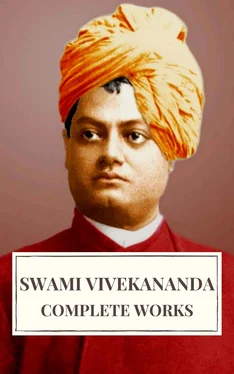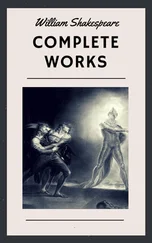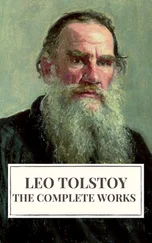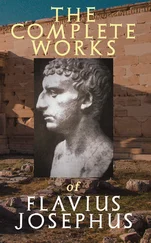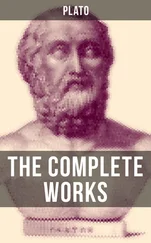The writers of these books simply jotted down these lines as helps to remember certain facts which they supposed were already well known. In a narrative, perhaps, which they are telling, they take it for granted that it is well known to everyone they are addressing. Thus a great difficulty arises, we scarcely know the real meaning of any one of these stories, because the traditions have nearly died out, and the little that is left of them has been very much exaggerated. Many new interpretations have been put upon them, so that when you find them in the Purânas they have already become lyrical poems. Just as in the West, we find this prominent fact in the political development of Western races that they cannot bear absolute rule, that they are always trying to prevent any one man from ruling over them, and are gradually advancing to higher and higher democratic ideas, higher and higher ideas of physical liberty, so, in Indian metaphysics, exactly the same phenomenon appears in the development of spiritual life. The multiplicity of gods gave place to one God of the universe, and in the Upanishads there is a rebellion even against that one God. Not only was the idea of many governors of the universe ruling their destinies unbearable, but it was also intolerable that there should be one person ruling this universe. This is the first thing that strikes us. The idea grows and grows, until it attains its climax. In almost all of the Upanishads, we find the climax coming at the last, and that is the dethroning of this God of the universe. The personality of God vanishes, the impersonality comes. God is no more a person, no more a human being, however magnified and exaggerated, who rules this universe, but He has become an embodied principle in every being, immanent in the whole universe. It would be illogical to go from the Personal God to the Impersonal, and at the same time to leave man as a person. So the personal man is broken down, and man as principle is built up. The person is only a phenomenon, the principle is behind it. Thus from both sides, simultaneously, we find the breaking down of personalities and the approach towards principles, the Personal God approaching the Impersonal, the personal man approaching the Impersonal Man. Then come the succeeding stages of the gradual convergence of the two advancing lines of the Impersonal God and the Impersonal Man. And the Upanishads embody the stages through which these two lines at last become one, and the last word of each Upanishad is, “Thou art That”. There is but One Eternally Blissful Principle, and that One is manifesting Itself as all this variety.
Then came the philosophers. The work of the Upanishads seems to have ended at that point; the next was taken up by the philosophers. The framework was given them by the Upanishads, and they had to fill in the details. So, many questions would naturally arise. Taking for granted that there is but One Impersonal Principle which is manifesting Itself in all these manifold forms, how is it that the One becomes many? It is another way of putting the same old question which in its crude form comes into the human heart as the inquiry into the cause of evil and so forth. Why does evil exist in the world, and what is its cause? But the same question has now become refined, abstracted. No more is it asked from the platform of the senses why we are unhappy, but from the platform of philosophy. How is it that this One Principle becomes manifold? And the answer, as we have seen, the best answer that India has produced is the theory of Maya which says that It really has not become manifold, that It really has not lost any of Its real nature. Manifoldness is only apparent. Man is only apparently a person, but in reality he is the Impersonal Being. God is a person only apparently, but really He is the Impersonal Being.
Even in this answer there have been succeeding stages, and philosophers have varied in their opinions. All Indian philosophers did not admit this theory of Maya. Possibly most of them did not. There are dualists, with a crude sort of dualism, who would not allow the question to be asked, but stifled it at its very birth. They said, “You have no right to ask such a question, you have no right to ask for an explanation; it is simply the will of God, and we have to submit to it quietly. There is no liberty for the human soul. Everything is predestined — what we shall do, have, enjoy, and suffer; and when suffering comes, it is our duty to endure it patiently; if we do not, we shall be punished all the more. How do we know that? Because the Vedas say so.” And thus they have their texts and their meanings and they want to enforce them.
There are others who, though not admitting the Maya theory, stand midway. They say that the whole of this creation forms, as it were, the body of God. God is the Soul of all souls and of the whole of nature. In the case of individual souls, contraction comes from evil doing. When a man does anything evil, his soul begins to contract and his power is diminished and goes on decreasing, until he does good works, when it expands again. One idea seems to be common in all the Indian systems, and I think, in every system in the world, whether they know it or not, and that is what I should call the divinity of man. There is no one system in the world, no real religion, which does not hold the idea that the human soul, whatever it be, or whatever its relation to God, is essentially pure and perfect, whether expressed in the language of mythology, allegory, or philosophy. Its real nature is blessedness and power, not weakness and misery. Somehow or other this misery has come. The crude systems may call it a personified evil, a devil, or an Ahriman, to explain how this misery came. Other systems may try to make a God and a devil in one, who makes some people miserable and others happy, without any reason whatever. Others again, more thoughtful, bring in the theory of Maya and so forth. But one fact stands out clearly, and it is with this that we have to deal. After all, these philosophical ideas and systems are but gymnastics of the mind, intellectual exercises. The one great idea that to me seems to be clear, and comes out through masses of superstition in every country and in every religion, is the one luminous idea that man is divine, that divinity is our nature.
Whatever else comes is a mere superimposition, as the Vedanta calls it. Something has been superimposed, but that divine nature never dies. In the most degraded as well as in the most saintly it is ever present. It has to be called out, and it will work itself out. We have to ask. and it will manifest itself. The people of old knew that fire lived in the flint and in dry wood, but friction was necessary to call it out. So this fire of freedom and purity is the nature of every soul, and not a quality, because qualities can be acquired and therefore can be lost. The soul is one with Freedom, and the soul is one with Existence, and the soul is one with Knowledge. The Sat-Chit-Ânanda — Existence-Knowledge-Bliss Absolute — is the nature, the birthright of the Soul, and all the manifestations that we see are Its expressions, dimly or brightly manifesting Itself. Even death is but a manifestation of that Real Existence. Birth and death, life and decay, degeneration and regeneration — are all manifestations of that Oneness. So, knowledge, however it manifests itself, either as ignorance or as learning, is but the manifestation of that same Chit, the essence of knowledge; the difference is only in degree, and not in kind. The difference in knowledge between the lowest worm that crawls under our feet and the highest genius that the world may produce is only one of degree, and not of kind. The Vedantin thinker boldly says that the enjoyments in this life, even the most degraded joys, are but manifestations of that One Divine Bliss, the Essence of the Soul.
Читать дальше
